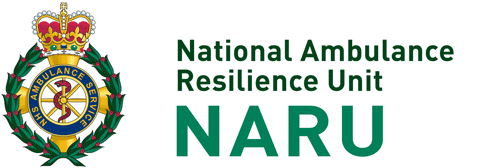Hazardous Area Response Teams
Hazardous Area Response Teams – more commonly known as HART – are comprised of specially recruited personnel who are trained and equipped to provide the ambulance response to high-risk and complex emergency situations.
HART teams are based in each of England’s ten NHS Ambulance Trusts, which means they can cover the whole of the country, in some cases working together on specific, large scale or high-profile incidents, either accidental or deliberately caused.
HART teams work alongside the police and fire & rescue services within what is known as the ‘inner cordon’ (or ‘hot zone’) of a major incident. The job of the HART teams is to triage and treat casualties and to help save lives in very difficult circumstances.
They are also there to look after other emergency personnel who may become injured whilst attending these difficult and challenging incidents.



HART teams are tactically capable of responding to the following types of challenging incident:
- Hazardous Materials – Working inside the inner cordon where hazardous materials are present; dealing with the aftermath of industrial accidents; transporting patients with high risk infectious diseases, for example Ebola; undertaking complex transportation cases (for example, after large scale accidents).
- CBRN(e) – Chemical, Biological, Radiological, Nuclear and Explosives – Providing the NHS specialist healthcare inner cordon response to CBRN(e) events.
- MTA – Marauding Terrorist Attack – Providing the NHS specialist healthcare response to acts of terrorism involving explosive devices, firearms, knives and / or weaponised vehicles.
- SWAH – Safe Working at Height – Providing the specialist healthcare response to patients taken ill at height, either on man-made structures or within the natural environment.
- Confined Spaces – Providing the specialist healthcare response to patients caught in substantially enclosed spaces; following building collapses; where compromised atmospheres are present; where entrapment of patients is hampering the delivery of care.
- Unstable Terrain – Providing the specialist healthcare response to patients caught within active rubble piles or where rural access or difficult terrain is providing a specific challenge to the rescue and extrication effort.
- Water Operations – Providing the specialist healthcare response to patients caught in water environments, for example swift water rescue, or where urban or rural flooding has occurred, and including deployment to boat operations.
- Providing support to security operations – Providing healthcare support to specific Government security operations, support to police operations such as incidents where illicit drug laboratories are present, and VIP close protection support.



Specialist training
HART personnel must undergo rigorous specialist training at the National Ambulance Resilience Unit Training & Education Centre before they can be deployed.
HART training is ongoing and features regular fitness assessments, ongoing PPE training and refresher training, reflective practice and Continuing Professional Development (CPD).
Learn more about what it takes to be part of HART by watching our film here.
